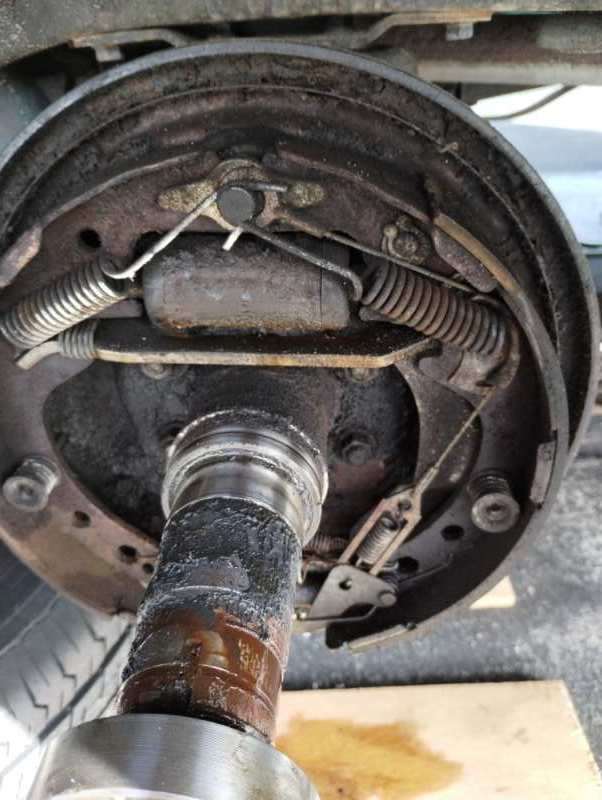-
Posts
6,891 -
Joined
-
Last visited
Content Type
Events
Profiles
Forums
Gallery
Posts posted by Maineah
-
-
How many wheel lugs and does the inner hub have several small nuts?
-
3 hours ago, AtlantaCamper said:
Did you check the voltage on the alternator when the truck is running? It should be in the range of 14 to 14.7 V DC. If it's not then the alternator would be suspect. How did you determine that the alternator is the source of the current draw? If the alternator regulator is bad then perhaps I can see how it could pull current, but is it possible that the draw is from somewhere else?
This is how I replace the alternator (from memory so it may not be exact). I prefer to take the radiator all the way out, but it can be done with it left in there. You have to remove the fluid and hoses anyway and at that point it's just 4 bolts to get the whole radiator out. I've caused damage to the fins on the radiator when I've tried to do it with it left in because there is so little space to work with if the radiator stays in there. Procedure:
- Disconnect the battery negative wire(s).
- Remove Radiator. remove upper air intake tube, drain the radiator, disconnect upper and lower hoses, disconnect and plug the transmission lines that go through the bottom of the radiator if yours has them, remove the 4 bolts from the radiator and pull it out with the plastic fan guard still attached.
- If you are going to keep the same belt then just loosen the alternator belt with the 12mm bolt on top of the alternator. If you are going to replace the belt(s) then take them all off. This is a good time to do any belt replacement.
- Disconnect the main charging wire on the alternator. You may have other wires to the alternator depending on what type it is.
- Remove the 12mm bracket bolt and then the nut on the main alternator mount (14mm I believe). Getting this bolt out can be tricky. Don't mess up the threads as you do it. You should be able to get the alternator out at this point.
- Reverse the procedure to assemble. You probably won't be able to get all of the radiator fluid in at first so run the engine and it should burp the system and give you the room to get the rest back in.
- Test the voltage when running to make sure it's above 14V and thus charging.
I'd start by checking the wires carefully from the battery to the starter. It could be a lack of current due to a failing connection for example.
8 hours ago, KonCon said:Alright so another issue came up. Battery went dead and I was wondering what it was. I was able to jump the car to start it and with a little juice in it hook up a battery charger. When the battery was full, I checked and found that something was still drawing ~3.2 amps. I found out, that it's the alternator so I suspect that needs to be replaced. is that an easy job? I was thinking about renting a car lift bay in one of these diy garages as it will make it so much easier than in the street. Would that be someone with very little knowledge would be able to do? Also thought at the same time replacing the starter contacts as I've had issues with the car starting before and I suspect the contacts to be the reason.
Thanks everyone
Starter contacts problems were very common on the older starters basically a click and nothing happening the contacts are replaceable. Try removing the main battery wire on the alternator then trying your current test again. Yes it is possible that a diode is bad but it's not common.
-
Long way from the switch to the light! Simple stuff first, had it been working fine up to that point?
-
Start current of the AC is high the start cap is a good place to start. Go to a electrical shop with the old one so they can match it they know what they are doing and it will be cheaper.
-
Usually the lighting is fused right and left.
-
I'll never swap out my propane water heater it's fast enough, it's hot and yes get over a long hot shower in any camper! There is just not enough room to make it much better. Both my Toy home and the camper will recover during the night for plenty of heat for a bed time shower and even dishes. They make flash heaters they suck up propane and are wicked noisy.
-
Flashers etc need resistance to work, the LED's provide little or nothing this is why you have to provide resistance. The bulbs in the original set up have enough resistance. The marker tail/ lamps are not part of the scenario so the problem is not related.
-
You most likely will have to add a resister to the led circuit.
-
This is where a cheap multi meter comes in. It kind of points to a tired converter or lack of power to it. (poor 120 volt connections)
-
Yes it has a low pressure pump. My guess one pump for both.
-
Shoot that's glue holding the bulb in a junk socket!
-
On 3/30/2023 at 10:17 PM, vert2021 said:
Sorry, trying to understand what you mean by "no matter what you do will prevent an overhaul"...
If the fluid is nasty and dark it's just a matter of time putting new fluid in most likely will finish it off. If the pump seal is leaking the pump bushing probably is on it's way out. They are good little transmissions but in a motor home they are over worked.
-
Ok just read the whole thing bottom line no matter what you do will prevent an overhaul. New fluid on a hard worked trans with issue you'll be walking with in a week. The new fluid is highly detergent and most likely take the clutch's out. They are actually good old transmissions. If you could drain the converter that will only make it worse with the new fluid. I worked for a transmission shop we actually saved drain oil from transmissions that was clean looking. After trying to explain to the customer the hazard of using new fluid in one that had brown oil we when ahead and drain it and put the oil we saved in it instead of new. It bought them more time.
-
-
-
Use the propane it's cheaper and works better to keep the fridge cool. Been all over never had the flame blow out.
-
Common issue on the older starters. There is a copper disk inside of the plate on the back of the starter and two contact studs, You will find the studs pretty beat up, the round disks on the older ones could be turn over and the studs could be removed and turned 90*. Seems like yesterday but it's been a couple decades since I used to repair them! They actually are pretty tough starters same ideal is used today.
-
Home made any thing goes. I'm guessing but the free lead probably went to the battery. Fog light's etc? The feed wire is not big enough for 30 amps needs to be a # 10 wire.
-
Fell across an Onan 4K generator out of a large MH, with out a doubt it's was the quietest generator I ever heard. That particular generator was a four pole that allowed it to produce 60 cycles at 1800 rpm as opposed to the 2 pole at 3600 big difference. It along with being heavy was BIG!
-
Can you see the little blue flame in the window on the control panel?
-
It's going to howl cold for a bit it's the gook inside of the clutch (it's thick) it warms up fast and goes back into the normal mode.
-
Often fused right and left.
-
Right hand drive?
-
It is accessible with a code reader my guess shift solenoid.




The A43D Automatic Transmission
in Engines - Transmissions - Drive Train - Suspension - Chassis - Steering - Exhaust - Tires - Etc.
Posted
It is a small round seal behind the linkage, I have removed them with a small pointed screw screwed into the metal part of the seal and plyers. Getting it back in is easy with a deep socket.